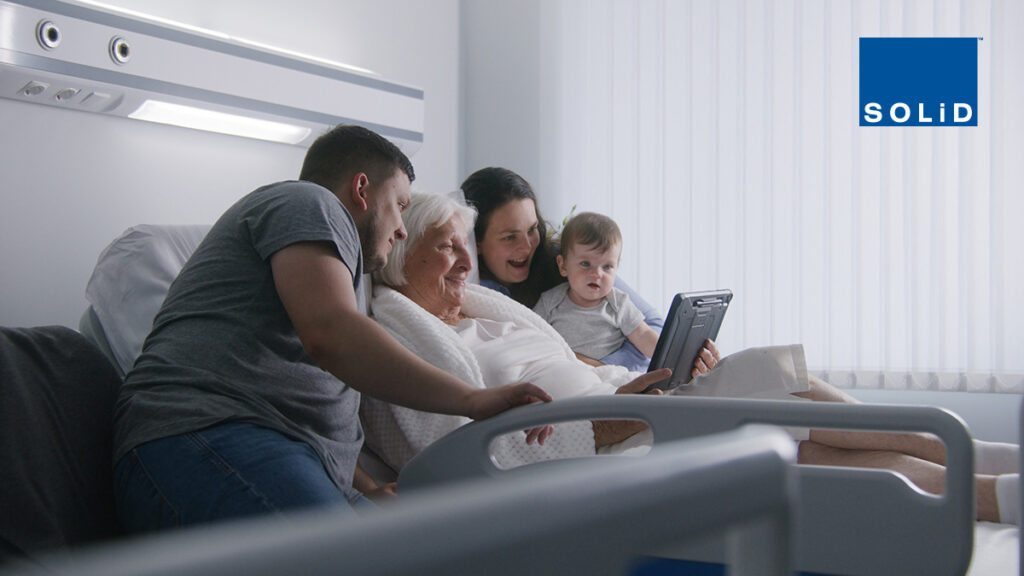When your top priority is delivering first-rate care, every aspect of the patient experience is mission-critical. In today’s hospitals and healthcare facilities, an integral part of this experience is ensuring reliable access to mobile voice and data connectivity.
Poor in-building mobile coverage impairs patient care quality in many ways. As more hospitals adopt a bring-your-own-device (BYOD) policy, seamless connectivity is essential to provide physicians and staff with secure, reliable access to electronic healthcare records, patient intake forms, and application data across the medical campus. Medical staff often use mobile devices to conduct video consultations, remote monitoring, virtual visits, and other telehealth services as well. In fact, telehealth and digital health tools are vital for providing access to care for more than 30 million Americans.
Reliable, 24×7 wireless connectivity also is crucial for a growing number of healthcare facilities that use the Internet of Medical Things (IoMT) to monitor and maintain diagnostic equipment, pharmaceuticals, and hospital supplies. Moreover, patients and visitors now expect always-on connectivity for laptops and smartphones, whether they want to review laboratory test results, video chat with family members, or just make a phone call without constant dropped signals.
All of these applications require secure, ubiquitous in-building connectivity to ensure optimum health outcomes and a first-class patient experience. What can healthcare IT professionals do to deliver a better-connected experience for patients, staff, and visitors?
To 5G and Beyond
As 5G adoption continues to escalate, mobile network operators (MNOs) are adding more radio frequency (RF) spectrum to meet the need for increased network coverage and capacity. New mid-band frequencies, such as the C-Band and Citizens Broadband Radio Service (CBRS), are easily blocked by neighboring structures, modern building materials, and energy-efficient windows, which means that outdoor network signals cannot easily penetrate buildings, interior walls, furniture, and other obstacles. As a result, more patients, staff, and visitors experience dropped calls and poor service quality throughout hospitals and medical campuses. Furthermore, the unique interior layouts typical in many hospitals often make this situation worse.
Although many modern healthcare facilities have an in-building distributed antenna system (DAS) in place to provide cellular coverage, most legacy platforms need to be updated or replaced to work with new mid-band 5G frequencies. For those hospitals with a modular, multi-band system such as the ALLIANCE 5G DAS platform, adding support for new frequency bands is simple and straightforward. However, some modifications will be necessary due to the particular characteristics of the mid-band frequency bands.
Technology Transitions
Mid-band spectrum is well-suited for 5G network deployments because it provides access to larger frequency channels, which enables greater capacity. Yet, these wider channels also consume more radio output power, leading to weaker signals and smaller coverage area per antenna. In addition, the mid-band spectrum signal propagation range is shorter than legacy mobile communications spectrum, further impacting 5G capacity and coverage reach.
For example, when using C-Band spectrum, in-building coverage per antenna is roughly 15 percent of that provided by legacy mobile frequencies at the same power level. This means that an antenna providing a little more than 1,000 square feet of coverage with 4G would only cover around 150 square feet with the 5G C-Band in a typical building with furniture and sheetrock walls.
Ultimately, in addition to upgrading DAS equipment to support new 5G frequencies, configuration changes are needed as well to achieve the same coverage footprint as legacy DAS equipment. One option is to add amplifiers that provide 4 to 10 times more output power per antenna, eliminating “dead zones” and spotty coverage. On the other hand, when a legacy system already uses high-output power amplifiers, a better solution may be a fiber-to-the-edge overlay system to support new 5G frequencies.
A fiber-to-the-edge system like the SOLiD ALLIANCE edgeROU carries transmissions all the way to the edge of the network, bringing high-speed data and voice closer to users for improved quality. A common fiber infrastructure also provides the high performance, low latency, and inherent data security required to support IoMT connectivity, augmented reality and virtual reality (AR/VR) technologies, and new medical devices that require higher bandwidth. Plus, this advanced infrastructure enables hospitals to leverage the latest smart building capabilities, such as intelligent heating and lighting, or secure personnel access systems.
The Ideal Patient Experience
Today’s patient experience is continually changing. Smartphones, tablets, laptops, and mission-critical medical devices need to work all the time, everywhere, to keep healthcare facilities running smoothly.
Pervasive in-building connectivity throughout hospitals and medical campuses enables doctors, nurses, and therapists to rely on secure, BYOD mobility as they move from patient to patient. Healthcare clinicians can quickly document post-surgery notes, patient progress, or bedside vitals, uploading the data directly to the patient’s medical record. This not only increases accuracy and collaboration, it also improves efficiencies and access to care, overcoming barriers that often affect patient outcomes and increase costs.
Upgrading or installing the latest DAS systems allows healthcare facilities to deliver a secure, reliable connectivity experience that provides sufficient bandwidth for the best possible patient experience and overall well-being. That’s why a wide range of healthcare facilities throughout the U.S. rely on SOLiD’s expertise and ALLIANCE DAS equipment, connecting multiple cellular networks and distributing the signals to every corner of their campus. These include Boston Children’s Hospital, Colorado Children’s Hospital, Memorial Sloan Kettering Hospital, Evans Army Hospital, Intermountain Medical Center, SLC Lutheran Medical Center, Santa Barbara Cottage Hospital, and multiple Kaiser Hospitals.
To learn more about how SOLiD can help you build a healthy mobile communications infrastructure to enable outstanding patient experiences and an excellent standard of care, visit: solid.com/us/industries/healthcare.
